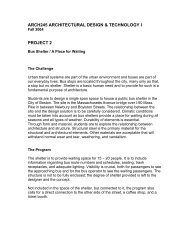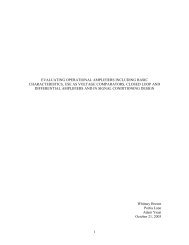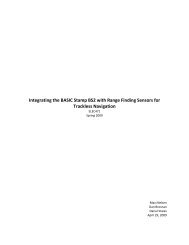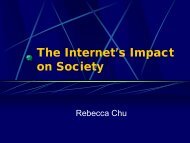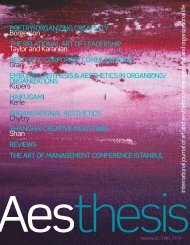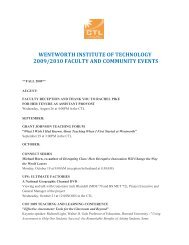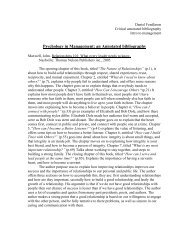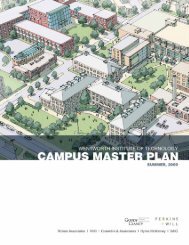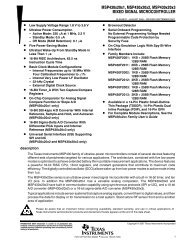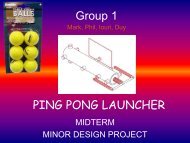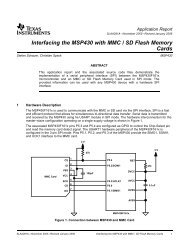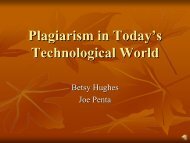Thesis Book - MyWeb at WIT
Thesis Book - MyWeb at WIT
Thesis Book - MyWeb at WIT
You also want an ePaper? Increase the reach of your titles
YUMPU automatically turns print PDFs into web optimized ePapers that Google loves.
a site for the “uncanny” to manifest. 15 Vidler st<strong>at</strong>es th<strong>at</strong> the uncanny “is not a property of space itself nor can it be provoked by<br />
any particular sp<strong>at</strong>ial conform<strong>at</strong>ion”, but th<strong>at</strong> it is an “aesthetic dimension” th<strong>at</strong> erases the boundaries between “the real and the<br />
unreal.” 16 Finally, all the sources can agree on the aspir<strong>at</strong>ions of the only architect to <strong>at</strong>tempt surrealist architecture: Frederick<br />
Kiesler.<br />
According to Bernard Tschumi, author of the article “Architecture and Its Double”, which appeared in the 1978 volume of<br />
Architectural Design, Kiesler’s first surrealist space was the “space-stage” in 1923 for the production of RUR in Berlin. 17 Kiesler<br />
designed a funnel shaped auditorium space where the walls and ceilings could open up during the show. Tschumi describes Kiesler’s<br />
second surrealist project, ‘The Endless The<strong>at</strong>er’ in Vienna, which had an unfolding double shell of cast-glass, as well as ramps,<br />
elev<strong>at</strong>ors, and pl<strong>at</strong>forms to cre<strong>at</strong>e a continuous space th<strong>at</strong> did not separ<strong>at</strong>e functions. 18 Tschumi comments th<strong>at</strong> Kiesler turned<br />
to unbuilt architectural research, dealing with how spaces were inherently connected to a person’s deep unconscious. 19 Tschumi<br />
argues th<strong>at</strong> Kiesler’s <strong>at</strong>tempt <strong>at</strong> surrealist architecture have been ignored by architectural historians in favor of the 1920s movement<br />
towards Modernism. 20 Dalibor Veseley acknowledges th<strong>at</strong> Kiesler worked on his ‘Endless House’ for 40 years, arguably the most well<br />
known surrealist architectural design, cre<strong>at</strong>ing “a continuous space very much like a cave in the shape of an egg, with gre<strong>at</strong> freedom<br />
of movement inside, gre<strong>at</strong> flexibility for dividing the space.” 21 However, Veseley points out the fact th<strong>at</strong> the Endless House was never<br />
actually built, challenging the limits of “genuine surrealist architecture.” 22 Anthony Vidler questions whether Kiesler’s egg-shaped<br />
design is surrealist; as Kiesler himself has said th<strong>at</strong> it is more “Correalist”, meaning it had a “continual interaction between man<br />
and his n<strong>at</strong>ural and technological environments.” 23 Stephen Philips, author of “Introjection and Projection: Frederick Kiesler and his<br />
15 Anthony Vidler. Fantasy, the Uncanny and Surrealist Theories of Architecture. Papers of Surrealism Winter, no. 1: 2 (2003), 3.<br />
16 Ibid.<br />
17 Surrealism and Architecture. Architectural Design 48, no. 2-3(1978),116.<br />
18 Surrealism and Architecture. Architectural Design 48, no. 2-3(1978), 116.<br />
19 Ibid, 116.<br />
20 Ibid.<br />
21 Surrealism and Architecture. Architectural Design 48, no. 2-3(1978), 93.<br />
22 Ibid, 94.<br />
23 Anthony Vidler. Fantasty, the Uncanny and Surrealist Theories of Architecture. Papers of Surrealism Winter, no. 1:2 (2003), 2.<br />
25



